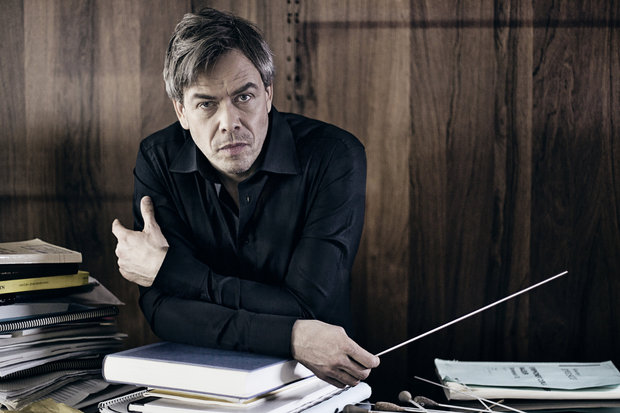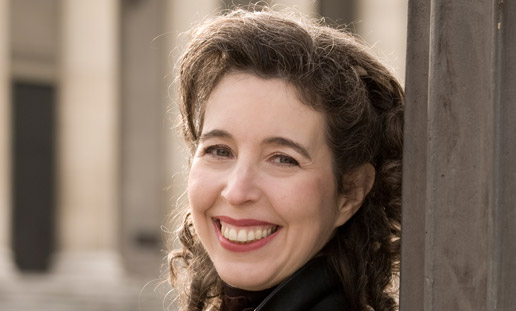Lintu returns to lead Baltimore Symphony in Rautavaara, Beethoven, and Dvořák

Hannu Lintu conducted the Baltimore Symphony Orchestra Friday night at Meyerhoff Symphony Hall. Photo: Kaapo Kamu
Hannu Lintu led the Baltimore Symphony Orchestra in a concert of uplifting music Friday night at Meyerhoff Symphony Hall. Currently chief conductor of the Finnish Radio Symphony Orchestra, Lintu has been a frequent and much-lauded BSO guest conductor since his acclaimed debut with the orchestra in 2010.
The opening work was a BSO premiere, Cantus Arcticus by the late Finnish composer Einojuhani Rautavaara. Often called the greatest composer from Finland since Sibelius, Rautavaara’s music enjoys wide appeal owing to its tonality and tunefulness, atypical of many contemporary works. Among the composer’s most well known works, Cantus Arcticus is emblematic of that style. Subtitled “Concerto for Birds and Orchestra,” it uses pre-recorded sounds of birdsong taped in the Arctic Circle interwoven within a lush and melodious orchestration.
The flutes and trumpets played the opening section with a smooth, graceful tone. Throughout the work’s three connected movements the ensemble maintained a focused sound even in very soft dynamics, and Lintu achieved an intriguing blend of sonorities with the orchestra set against the unusual bird calls. Principal cellist Dariusz Skoraczewski’s solo in the first movement was truly captivating. Apart from some moments of disunity in the first violins, the strings played with crystalline sound quality in all three movements.

Angela Hewitt
The evening’s centerpiece was Beethoven’s First Piano Concerto, Opus 15, featuring soloist Angela Hewitt. The first movement was taken at a brisk, tempo that highlighted the movement’s brilliance and vivacity, tightly controlled by clear and graceful gestures from Lintu. Hewitt exuded strength and conviction from the first note, and proceeded through the movement with a constant forward momentum that never lost sight of the frequent and surprising changes of character. Hewitt played the standard cadenza written by Beethoven himself, imbued with an engaging improvisational freshness.
In the Largo second movement, Hewitt produced sound that varied between full-voiced passion and subdued lyricism. The beauty of her piano playing was marred occasionally in the tutti sections by tuning issues in the winds. Hewitt began the third movement at a very quick tempo that accentuated the rhythmic, dancing quality of the music. The entire performance was marked by great poise and grace from the soloist. After an enthusiastic ovation, Hewitt offered Domenico Scarlatti’s C Major Sonata K. 159 as an encore.
The highlight of the evening was the performance of Dvorak’s Eighth Symphony, which Lintu conducted from memory. Though regarded as one of Dvorak’s mature masterpieces, the Eighth is still heard less often than its popular successor, the “New World” symphony.
The cellos played the opening theme of the first movement beautifully, and the ensuing build-up resulted in a unified sound that showed the Baltimore orchestra at its very best. The brass section had a varied palette of colors complimented by a subdued sound from the strings. Lintu highlighted every detail in the dense multilayered writing of the development, and led the ensemble in striking swells and climaxes.
Beautiful playing by the flutes and clarinets opened the second movement, though there was some shakiness from the horns. In general, Lintu maintained a tight grip on the movement, creating cohesion between contrasting moments of pastoral atmosphere and funerary solemnity. Dismayingly, the concertmaster’s solo in the middle of the movement was rendered aggressively and with variable intonation.
In the third movement, the ensemble produced a lighter sound, bringing out the dance-like quality of the music. The strings played with broad, sweeping phrases and achieved moments of touching poignancy. The orchestra was perfectly attuned to Lintu’s leadership in the subtle rubato of the coda that closes the movement.
The finale began with an excellent, bold sound from the trumpet in a long exposed solo, though the low note played by the second horn at the end of the opening phrase was again shaky. Lintu drew a rich variety of sounds from the orchestra, moving seamlessly between boisterous, dramatic, lyrical, and tense passages. The piece culminated in an ecstatic swell of sound that had the audience on its feet.
The program will be repeated 8 p.m. Saturday at the Music Center at Strathmore and 3 p.m. Sunday at Meyerhoff Symphony Hall in Baltimore. bsomusic.org; 410-783-8000 (Meyerhoff); 1-877-BSO-1444 (Strathmore).


